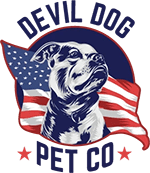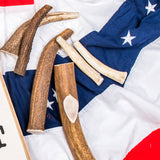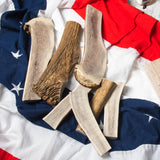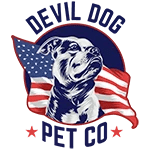Key Takeaways
- The term "dinosaur dogs" is a misleading phrase as no canines lived alongside actual dinosaurs.
- This phrase highlights an evolutionary journey of dog ancestors spanning millions of years.
- Exploring prehistoric dog ancestors provides valuable insights for modern dog leadership.
- It is important to distinguish between Hollywood myths and scientific facts about ancient canines.
Table of Contents
- What Does "Dinosaur Dog" Really Mean? Demystifying the Term
- The True Ancestors: How Ancient "Dinosaur Dogs" Evolved
- Meet the Giants: Prehistoric "Dinosaur Dog" Species and Their Superpowers
- Dinosaur Dogs vs. Modern Canines: What's Actually Different?
- Decoding Fossils – How Scientists Identify Dog Ancestors vs. Dinosaurs
- Dinosaur Dogs in Pop Culture – Breeds, Products, and Learning Resources
- Responsible Leadership Lessons from Prehistoric "Dinosaur Dogs"
- Visiting Dinosaur Parks and Museums with Dogs – Canine-Friendly Adventure Guide
- Leadership Lessons from Prehistoric Canids
- The Verdict on Dinosaur Dogs
Dinosaur Dogs – Myths vs Facts About Ancient Canines
The term "dinosaur dogs" sparks curiosity and confusion in equal measure. While no canine ever shared the planet with actual dinosaurs, this fascinating phrase connects us to an incredible evolutionary story spanning millions of years. Understanding the truth behind prehistoric dog ancestors reveals powerful insights for modern dog leadership and helps separate Hollywood fiction from scientific fact.
For dog owners fascinated by prehistoric power, providing antler dog chews can help satisfy your pup's natural urge to gnaw, an instinct rooted in their ancient ancestry. If your dog is a determined chewer, consider the Beast Himalayan Dog Chew for a long-lasting, challenging treat that channels those evolutionary drives.
What Does "Dinosaur Dog" Really Mean? Demystifying the Term
"Dinosaur dogs" typically refers to three distinct concepts: ancient prehistoric canids, modern breeds with primitive appearances, or pop culture references mixing dogs and dinosaurs. The scientific reality? Dogs never coexisted with dinosaurs. Dinosaurs went extinct 66 million years ago, while the earliest dog ancestors appeared around 40 million years ago during the Eocene epoch.
Download the FREE 10-Step Dog Prep Guide
The True Ancestors: How Ancient "Dinosaur Dogs" Evolved

The canine family tree begins with Miacidae, small carnivorous mammals that lived 60-34 million years ago. These early ancestors possessed retractable claws and flexible limbs, setting the foundation for both dog and cat evolution. The first true canids emerged around 40 million years ago with Prohesperocyon, a fox-sized predator in North America.
Key evolutionary milestones shaped prehistoric "dinosaur dogs" into formidable hunters. Hesperocyon (37-34 million years ago) developed longer legs for pursuit hunting. Cynodictis established pack behavior patterns still seen in modern wolves. The massive Borophaginae subfamily earned the "bone-crushing dogs" nickname through powerful jaws designed to crack mammoth bones.
These ancient canids adapted to diverse environments across continents. Unlike true dinosaurs with their reptilian physiology, prehistoric dogs were warm-blooded mammals with advanced social structures and problem-solving abilities that modern dog owners recognize in their own companions.
Meet the Giants: Prehistoric "Dinosaur Dog" Species and Their Superpowers
Hesperocyon gregorius represents the foundation of North American canids. Weighing 20-30 pounds with semi-retractable claws, this agile hunter resembled a modern fox but possessed the intelligence that would define the entire dog lineage.
Borophagus diversidens, the ultimate "bone-crushing dog," dominated the landscape 12-2 million years ago. At 60-80 pounds with massive skull muscles, Borophagus could crack bones that stumped other predators. Its hyena-like scavenging behavior and powerful bite force of approximately 400 PSI made it the apex recycler of its era.
Epicyon haydeni claims the title of largest prehistoric canid, reaching 200+ pounds during the Miocene epoch. This ambush predator combined wolf intelligence with bear-like power, hunting mega-fauna across ancient grasslands. To put this in perspective, Epicyon outweighed our dog Dexter by fifteen times while maintaining the pack coordination that defines modern canines.
| Species | Weight | Era (Million Years Ago) | Special Ability |
|---|---|---|---|
| Hesperocyon | 20-30 lbs | 37-34 | Semi-retractable claws |
| Borophagus | 60-80 lbs | 12-2 | Bone-crushing bite (400 PSI) |
| Epicyon | 200+ lbs | 15-5 | Largest canid ever |
| Dire Wolf | 125-175 lbs | 1.2-0.01 | Pack coordination |
Dinosaur Dogs vs. Modern Canines: What's Actually Different?
Prehistoric "dinosaur dogs" possessed physical advantages that dwarf modern breeds. Size dominance defined these ancient hunters, while today's largest dogs max out around 200 pounds, multiple prehistoric species routinely exceeded this threshold. Bite force tells another story: Borophagus delivered 400+ PSI compared to most modern dogs' 150-250 PSI range.
Behavioral differences reveal fascinating contrasts. Ancient canids were primarily solo or small-group hunters, lacking the complex pack hierarchies wolves developed later. Their resource-guarding instincts were extreme by today's standards, survival demanded fierce protection of kills from competing predators.
Leadership Lessons from Prehistoric Powerhouses
Modern dog owners can learn three critical lessons from these ancient hunters: mental stimulation prevents destructive behavior, physical challenges build confidence, and consistent leadership establishes trust. Prehistoric canids spent hours problem-solving for survival, today's dogs need that same mental engagement through training and enrichment.
| Trait | Prehistoric "Dinosaur Dogs" | Modern Dogs | Leadership Application |
|---|---|---|---|
| Jaw Strength | 400+ PSI (Borophagus) | 150-250 PSI average | Provide durable chews for mental stimulation |
| Hunting Style | Solo/small groups | Pack-oriented cooperation | Balance independence with teamwork training |
| Resource Guarding | Extreme survival necessity | Manageable through training | Address early with structured feeding routines |
| Problem Solving | Constant environmental challenges | Relies on human guidance | Create daily mental challenges and puzzles |
Understanding these differences helps modern owners provide appropriate outlets for ancestral drives. Power-chewing breeds benefit from elk antlers and yak chews that satisfy their prehistoric urge to gnaw bones, while structured training channels their problem-solving intelligence constructively.
Decoding Fossils – How Scientists Identify Dog Ancestors vs. Dinosaurs

Paleontologists use three primary criteria to distinguish prehistoric canid fossils from dinosaur remains. Skull morphology provides the clearest identification, canid skulls feature distinct sagittal crests (bone ridges) for massive jaw muscle attachment, while dinosaur skulls show reptilian bone density and structure patterns.
Tooth wear patterns tell the behavioral story. Prehistoric dog teeth show carnassial shearing surfaces designed for slicing meat and crushing bones. Dinosaur teeth vary dramatically by diet but lack the specialized carnassial arrangement that defines mammalian carnivores.
Limb bone structure reveals locomotion differences. Canid leg bones show adaptations for pursuit hunting, longer, more robust than their Miacidae ancestors but maintaining mammalian joint articulation. Dinosaur limb bones reflect reptilian biomechanics with different joint angles and muscle attachment points.
For museum visitors, look for these identification clues: canid fossils typically display forward-facing eye sockets (binocular vision for hunting), while most dinosaurs show lateral eye placement. The presence of a pronounced jawline with visible canine tooth sockets immediately identifies mammalian predators versus reptilian alternatives.
Dinosaur Dogs in Pop Culture – Breeds, Products, and Learning Resources
Modern breeds earning "dinosaur dog" nicknames typically possess prehistoric appearances or exceptional bite strength. Cane Corsos, Dogo Argentinos, and Presa Canarios showcase the muscular build and jaw power reminiscent of ancient Borophagus. These powerful breeds require experienced leadership and durable enrichment tools.
Top Learning Resources: The Natural History Museum of Los Angeles features exceptional prehistoric canid displays. "Dogs: Their Fossil Relatives and Evolutionary History" by Xiaoming Wang provides scientific depth for serious enthusiasts. The documentary "Rise of the Mammals" covers canid evolution with stunning visual reconstructions.
Power-Chewer Essentials: Breeds with "dinosaur dog" strength need chews that match their capabilities. Devil Dog Pet Co's Monster elk antlers satisfy the strongest jaws safely, while Beast-sized yak chews provide hours of productive gnawing. These aren't just treats, they're tools for channeling prehistoric drives into positive behavior.
Quality enrichment prevents the destructive chewing that leads to shelter surrenders. When you provide appropriate outlets for ancestral behaviors, you're honoring millions of years of canine evolution while building the human-dog bond that defines successful ownership.
Responsible Leadership Lessons from Prehistoric "Dinosaur Dogs"
Prehistoric canids survived through three core principles modern owners must embrace: consistent resource management, environmental awareness, and adaptive problem-solving. Ancient dogs couldn't afford behavioral inconsistency, survival demanded reliable responses to challenges.
Translate this to daily leadership: rotate high-value chews to maintain novelty and prevent resource guarding, create structured "hunting" games that engage problem-solving instincts, and establish clear boundaries that build confidence rather than confusion. Your dog's prehistoric ancestors thrived on predictable leadership within unpredictable environments.
Consider two scenarios: an under-stimulated power chewer destroying furniture versus that same dog working through a challenging yak chew while you handle business calls. The difference isn't the dog, it's the owner's commitment to understanding and meeting ancestral needs through modern tools.
Devil Dog Pet Co's Extreme Dog Leadership model connects directly to this prehistoric wisdom. Our ethically sourced chews aren't convenience products, they're leadership tools that honor your dog's evolutionary heritage while preventing behavioral problems that destroy the human-dog bond.
Visiting Dinosaur Parks and Museums with Dogs – Canine-Friendly Adventure Guide

Most dinosaur parks welcome leashed dogs on outdoor trails but restrict access to indoor exhibits. Pack a portable water bowl, bring Devil Dog Pet Co.'s durable antler chews for quiet moments, and check each location's specific pet policy before departure. Most facilities require current vaccination records and prohibit dogs from fossil dig sites or interactive exhibits.
Essential prep checklist: leash and backup collar, waste bags, vaccination paperwork, and cooling gear for summer visits. Many parks offer shaded rest areas where your dog can decompress between trail segments. Choose chews that won't create mess or noise, yak chews work perfectly for museum waiting areas.
Pro Tip: Call ahead to confirm trail conditions and pet-friendly hours. Some parks restrict dogs during peak visitor times or educational programs.
Top dog-friendly dinosaur destinations include Dinosaur National Monument (Utah/Colorado), Hell Creek State Park (Montana), and Badlands National Park (South Dakota). Each offers leash-friendly trails where you and your pup can explore ancient landscapes together.
Leadership Lessons from Prehistoric Canids
Prehistoric "dinosaur dogs" survived through discipline, adaptability, and relentless focus, qualities every modern dog owner must master. These ancient canids didn't have the luxury of second chances; they led with purpose or perished. Today's dogs carry those same survival instincts, demanding owners who channel that prehistoric grit into structured leadership.
Three critical lessons emerge from the fossil record. First, prehistoric canids worked for every meal, engaging both body and mind daily. Modern dogs need that same challenge through puzzle feeding, structured walks, and durable chews that simulate natural foraging. Second, ancient pack leaders established clear boundaries immediately, no confusion, no mixed signals. Third, they never wasted energy on unnecessary conflict, choosing strategic engagement over constant confrontation.
Apply this wisdom through consistent daily structure: morning walks before food, designated chew times with premium antlers or yak chews, and non-negotiable boundaries around furniture, doorways, and meal times. Your dog's prehistoric DNA responds to confident, clear leadership, not endless treats or permissive coddling.
Extreme Dog Leadership Principle: Ancient canids thrived because they understood their role in the pack hierarchy. Modern dogs need that same clarity from their human leaders, consistent rules, meaningful work, and rewards that reinforce good choices.
When you hand your dog a Devil Dog Pet Co. antler chew, you're not just preventing destructive behavior, you're honoring millions of years of evolutionary programming that demands purposeful jaw work. Every supervised chew session becomes leadership training, teaching patience, focus, and respect for resources.
For more on the benefits and safety of antlers, read are antlers for dogs a good idea.
The Verdict on Dinosaur Dogs
The term "dinosaur dogs" captures our fascination with prehistoric power, but the real story lies in understanding canine evolution and applying those insights to modern ownership. While dogs never coexisted with dinosaurs, their ancient ancestors developed the same traits we admire today: loyalty, adaptability, and jaw strength that demands respect.
For today's dog owners, the prehistoric connection matters because it explains your dog's deepest instincts. That urge to chew isn't destructive, it's evolutionary programming demanding appropriate outlets. The pack mentality isn't stubbornness, it's hardwired social structure seeking clear leadership. Understanding this transforms how you approach training, enrichment, and daily management.
The future of responsible dog ownership lies in honoring these prehistoric roots while applying modern science. Provide structured leadership that ancient pack leaders would recognize. Offer enrichment challenges that engage those bone-crushing instincts safely. Choose chews tough enough to satisfy millions of years of evolutionary jaw development.
Whether you're fascinated by fossil records or simply want a better-behaved dog, the lesson remains consistent: lead with prehistoric grit, modern knowledge, and uncompromising standards. Your dog's ancient DNA is counting on it.
Bottom Line: "Dinosaur dogs" may be myth, but prehistoric canid wisdom is pure science. Channel that evolutionary toughness into daily leadership, arm yourself with chews worthy of ancient jaw power, and build the human-dog partnership both species were designed for.
For a scientific perspective on dog origins, see this study shedding light on dog origins. You can also learn more about bully sticks for dogs and their safety as a modern enrichment tool.
Download the FREE 10-Step Dog Prep Guide
Frequently Asked Questions
What does the term 'dinosaur dogs' actually mean and why is it considered misleading?
The term 'dinosaur dogs' is misleading because no canines lived alongside actual dinosaurs. It refers instead to prehistoric dog ancestors that evolved millions of years after dinosaurs went extinct, connecting us to a long evolutionary journey rather than a literal coexistence.
How did prehistoric dog ancestors evolve and what are some key milestones in their development?
Prehistoric dog ancestors began with Miacidae, small carnivorous mammals living 60–34 million years ago, which laid the groundwork for canid evolution. Around 40 million years ago, true canids like Prohesperocyon emerged, marking key milestones such as developing retractable claws and flexible limbs that shaped modern dogs' hunting abilities.
What are the main differences between prehistoric 'dinosaur dogs' and modern canines?
Prehistoric 'dinosaur dogs' were early canids with primitive features and hunting adaptations suited to their ancient environments, whereas modern canines have diversified into numerous breeds with specialized traits shaped by domestication and selective breeding. Importantly, prehistoric canids appeared long after dinosaurs vanished, so their biology and ecology differ significantly.
How can understanding the evolution of ancient canids provide valuable lessons for modern dog leadership?
Studying ancient canid evolution highlights the deep-rooted instincts and behaviors that modern dogs inherit, such as strong chewing drives and pack dynamics. Recognizing these ancestral traits empowers owners to embrace Extreme Dog Leadership by meeting their dog's natural needs with appropriate tools and consistent guidance.






